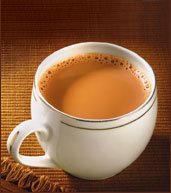Globally tea consumption is a recent phenomenon. Well the brew was quite popular since ages in countries like China, some parts of India and rest of Asia. The habit started with consumption for health as a medicine in China.With the rising popularity it entered the domain of Chinese culture. Following greater consumption the beverage became a consumer product.
This happened in India as well whence the British popularized it and spread its consumption all over their territory. In most of the Asian countries tea has become part of daily lifestyle. For masses it has become a daily habit and addiction. The beverage has become a ritualistic aspect of daily living an inseparable part of life.
In spite of its popularity the brew faces tough competition from coffee as well as fancy cocktails that have recently flooded the market. Coffee rules the roost globally but tea consumption is rising as well. It is making in roads into the adversaries domain.
With maddening varieties reaching the average drinker thanks to trendy packaging, tea is slowly making in roads as a lifestyle product. The trendy packaging with infusion of technology and modern blending methods has changed the paradigm. From a regular house hold product to lifestyle product the change has been brought about by innovative approach of tea houses. The gastronomic intervention introduced new recipes on lines of fancy coffee being sold in the shops.
The advent of tea lounge in the footstep
of coffee houses has brought in instant popularity amongst the younger
generation.Tea drinking has suddenly become an "In Thing". The modern lounges have revolutionized rest and recreation concept amongst the younger lot and office goers as well as the business class. The one stop joint for business meets, social gatherings, for hot tea beverages and yummy snacks with offerings of jet set ambiance...what more does one wish for. The drink that cheers now offers much more, not ignoring the health benefits that far surpass coffee.




